Cosmic rays may reveal new physics just beyond the LHC’s reach
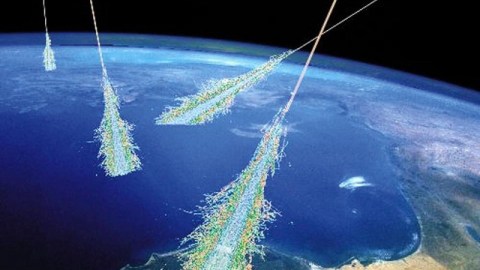
The highest energy collisions go beyond any collider… and may hold a fantastic secret!
This article was written by Sabine Hossenfelder. Sabine is a theoretical physicist specialized in quantum gravity. She writes about physics for Starts With A Bang and at her blog, BackReaction.
“Most of these experiments required the reduction of the cosmic ray muon flux in order to be successful, and the group necessarily became expert in the operation of deep underground laboratories.” -Frederick Reines
The Large Hadron Collider (LHC) — presently the world’s most powerful particle accelerator — reaches a maximum collision energy of 14 TeV. Two protons, moving at 299,792,455 m/s apiece, or a tantalizing 99.9999991% the speed of light, collide, leaving a maximum of 14 TeV of energy available for the creation of new particles. But the cosmic rays that collide with atoms in the upper atmosphere have been measured with speeds in great excess of these, resulting in collision energies about ten times as high as anything the LHC can muster. The two types of observations don’t compete with each other, but are complementary instead. At the LHC, energies are smaller, but collisions happen in a closely controlled experimental environment, directly surrounded by detectors. This is not the case for cosmic rays — their collisions reach higher energies, but the experimental uncertainties are far greater.
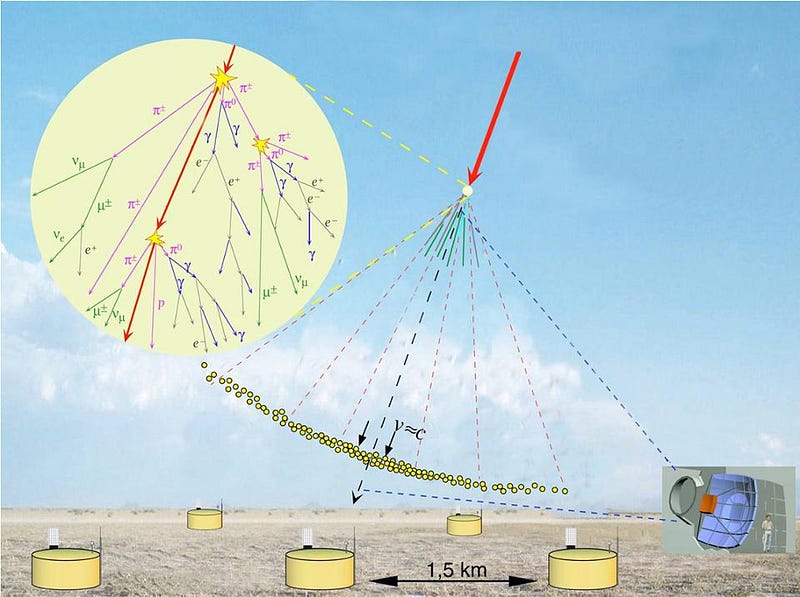
Recent results from the Pierre Auger Cosmic Ray observatory at center-of-mass energies of approximately 100 TeV are incompatible with the Standard Model of particle physics and hint at unexplained new phenomena. The statistical significance is not high, currently at 2.1 sigma (or 2.9 for a more optimistic simulation). This is approximately a one-in-100 probability to be due to random fluctuations.
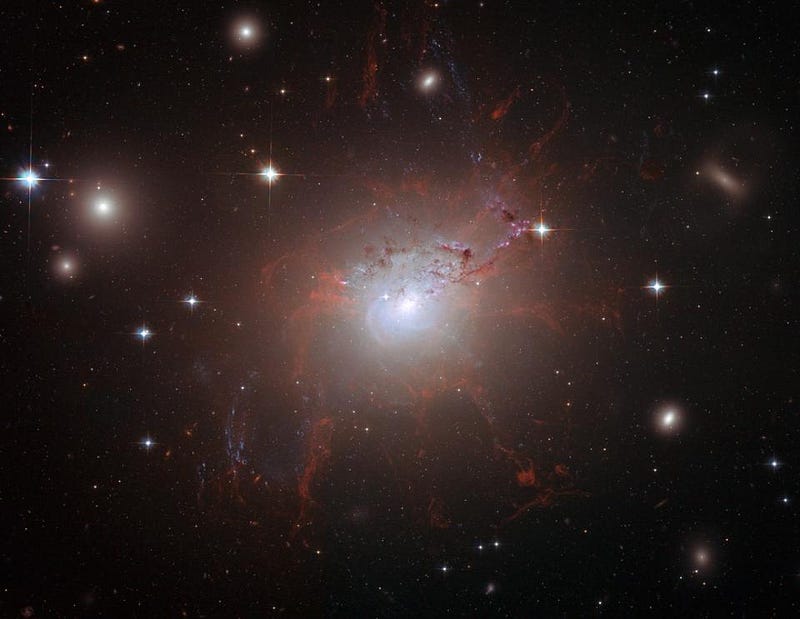
Cosmic rays are created either by protons or atomic nuclei which come from outer space. These particles are accelerated in galactic magnetic fields, though the exact mechanism by which they get their high speeds is often unknown. When they enter the atmosphere of planet Earth, they sooner or later hit an air molecule. This destroys the initial particle and creates a primary shower of new particles. This shower has an electromagnetic part and a component of quarks and gluons that quickly form bound states known as hadrons. These particles undergo further decays and collisions, leading to a secondary shower.
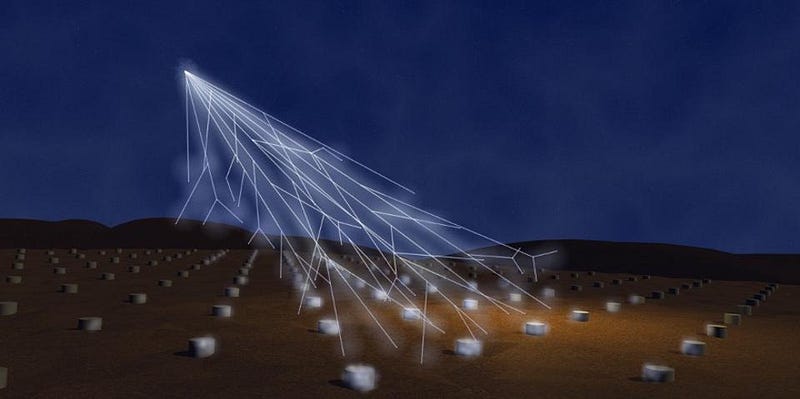
The particles of the secondary shower can be detected on Earth in large detector arrays like Pierre Auger, which is located in Argentina. Pierre Auger has two types of detectors: 1) detectors that directly collect the particles which make it to the ground, and 2) fluorescence detectors which captures the light emitted from the ionization air molecules.
The hadronic (quark-and-gluon) component of the shower is dominated by pions, which are the lightest mesons and are composed of a quark and an anti-quark. The neutral pions decay quickly, mostly into photons. But the charged pions create muons, which, at these high speeds, make it into the ground-based detectors.
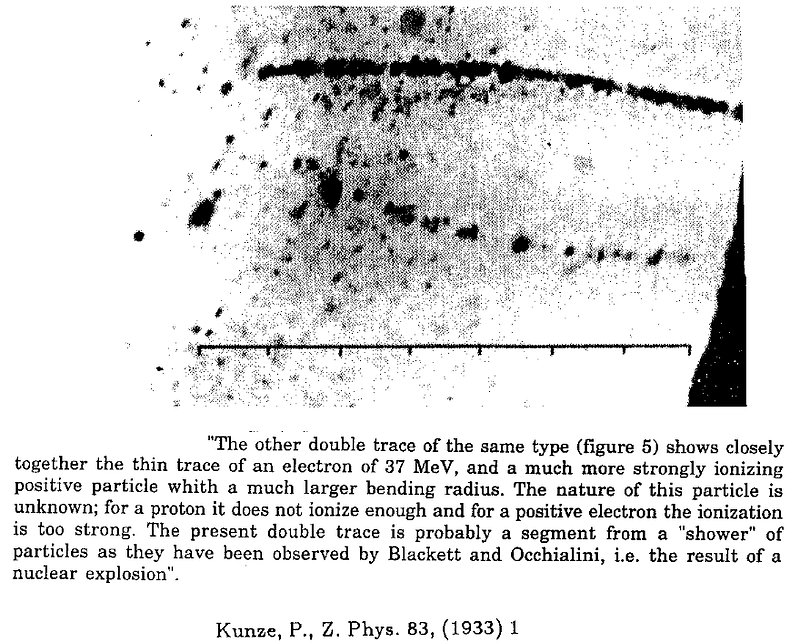
It has been known for several years that the muon signal seems too large compared to the electromagnetic signal; the balance between them is off. But this finding was not based on solid data analysis because it was dependent on a total energy estimate. If you don’t measure all particles of the shower and have to extrapolate from what you measure, there are some significant uncertainties that result.
In the new paper — just published in Phys. Rev. Letters — the Pierre Auger collaboration used a different analysis method for the data, one that does not depend on the total energy calibration. They individually fit the results of detected showers by comparing them to computer-simulated events. From a previously generated sample, they pick the simulated event that best matches the fluorescence result. Then they add two parameters to also fit the hadronic result: one parameter adjusts the energy calibration of the fluorescence signal, the other rescales the number of particles in the hadronic component. Then they look for the best-fit values and find that these are systematically off from what the standard model predicts. (Their analysis also shows that the energy does not need to be recalibrated.)
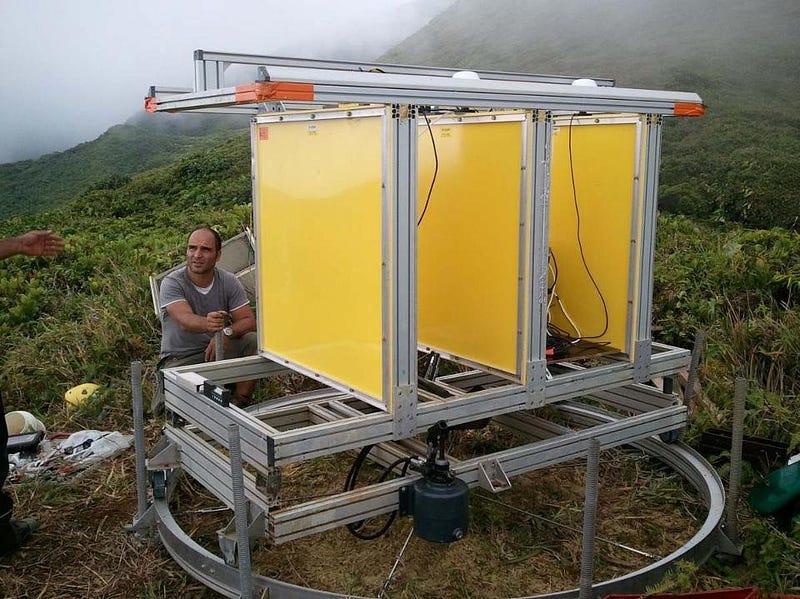
Since the neutral pions have a very short lifetime and decay almost immediately into photons, essentially all energy that goes into neutral pions is unavailable for the production of muons. Besides the neutral pions, there are two charged pions (π+ and π-) and as more energy is available for these and other hadrons, the more muons are produced in the end. So the result by Pierre Auger indicates that the total energy that branches into neutral pions is smaller than what the present simulations predict.
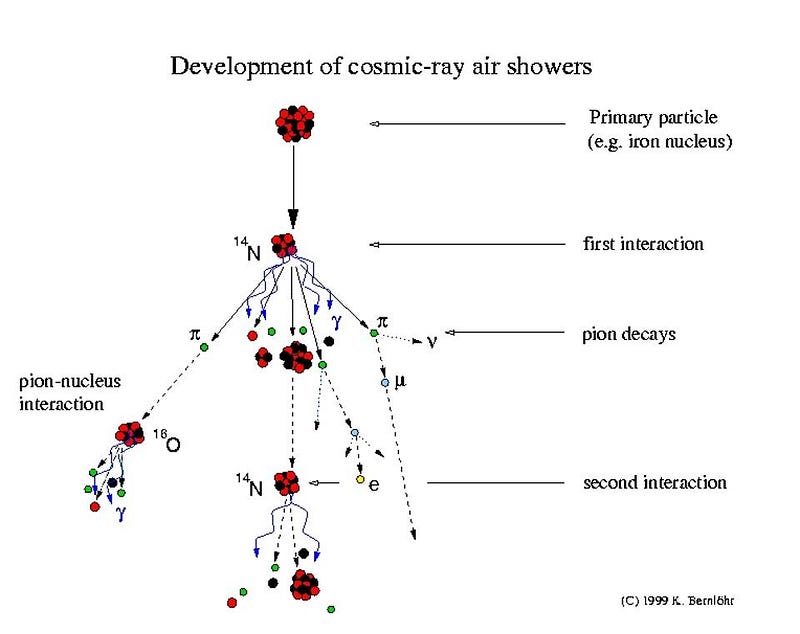
One possible explanation for this, which has been proposed by Farrar and Allen, is that we misunderstand chiral symmetry breaking. It is the breaking of chiral symmetry that accounts for the biggest part of the masses of nucleons (not the Higgs!). The pions are the (pseudo) Goldstone bosons of that broken symmetry, which is why they are so light and ultimately why they are produced so abundantly. Pions are not exactly massless, and thus “pseudo”, because chiral symmetry is only approximate. The chiral phase transition is believed to be close to the confinement transition, or the transition from a plasma of quarks and gluons to color-neutral hadrons. For all we know, it takes place at a temperature of approximately 150 MeV. Above that temperature, the chiral symmetry is said to be “restored”.
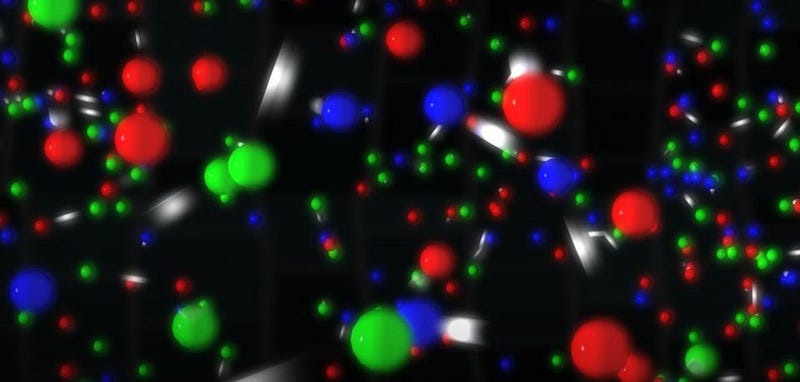
Chiral symmetry restoration almost certainly plays a role in the cosmic ray collisions, and a more important role than it does at the LHC. So, quite possibly, this is the culprit here. But it might be something more exotic, such as new short-lived particles that become important at high energies and which make interaction probabilities deviate from the standard model extrapolation. Or maybe, with less than 3 sigma significance, it’s just a measurement fluke that will go away with more data. If the signal remains, however, that’s a strong motivation to build the next generation of larger, more energetic particle collider, and reach for the 100 TeV threshold. If we cross that milestone, our accelerators would then be as good as the heavens themselves.
This post first appeared at Forbes, and is brought to you ad-free by our Patreon supporters. Comment on our forum, & buy our first book: Beyond The Galaxy!





